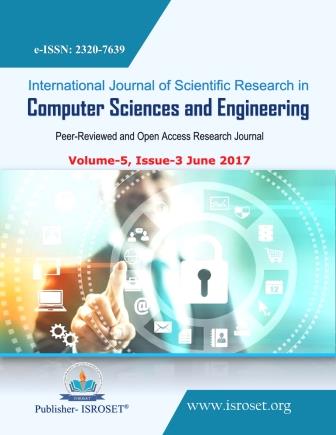Use of Cloud Computing for Implementation of e-Governance Services
Keywords:
E-governance, Cloud computing, IaaS Cloud, Service Oriented Architecture (SOA), Virtualization, Web Enabled Technology, Cloud datacenterAbstract
E-Governance enables use of Information and Communication Technologies (ICT) for smooth working of government by providing transparency efficient working in immediate response to end the citizens in cost effective manner. The exiting e-Governance is server centric and is not able to address all users including rural and urban citizens. Governments today are still facing challenges like lack of financial and technological resources, digital divide, poor IT infrastructure and lack of management in delivering core services to their citizens. Cloud Computing is a new way of delivering Services to the customer using pay-per-use model which not only involves less capital expenditure with minimum upfront cost, but is also more user and environmental friendly. This paper presents a cloud based model for implementation of e-Governance services. We found that the implementation of cloud-based e-government architecture cost-saving of Information and Communication Technology (ICT) investment in our country.
References
A. More, P. Kanungo, “Various e-Governance Applications, Computing Architecture and Implementation Barriers”, Proceedings of the International Congress on Information and Communication Technology, Singapore pp.635-643, 2016.
A. Rastogi, “A Model based Approach to Implement Cloud Computing in E-Governance”, International Journal of Computer Applications, Vol.9, Issue.7, pp.5-18, 2010.
C. Awasthi, P. Kanungo, “Resource Allocation Strategy for Cloud Computing Environment”, International Conference on Computer, Communication and Control (IC4), Indore, pp.1-5, 2015.
H. K. Mehta, M. Chandwani, P. Kanungo, “On trust management and reliability of distributed scheduling algorithms”, ICoAC 2010, Chennai, pp.46-50, 2010.
H.K. Mehta, P. Pawar, P. Kanungo, “A Two Level Broker System for Infrastructure as a Service Cloud”, Wireless Personal Communication, Vol.90, Issue.3, pp.1135–1147, 2016.
Mohd.A. Salam, A.C. Pandey, “Mobile Cloud Computing: Taking Web-Based Mobile Applications to the Cloud”, International Journal of Computer Sciences and Engineering, Vol.2, Issue.1, pp.35-42, 2014.
M. Ahmad, Z.A. Hasibuan, “Government Services Integration Based on Cloud Technology”, Proceedings of the 14th International Conference on Information Integration and Web-based Applications & Services, India, pp.303-306, 2012.
P. Kanungo, “Efficient Resource Management in Cloud Computing Using Virtualization”, International Journal of Advanced Research in Computer and Communication Engineering. Vol.5, Issue.4, pp.650-652, 2016.
R. Sharma, P. Kanungo, “An Intelligent Cloud Computing Architecture Supporting e-Governance”, 17th International Conference on Automation and Computing, Huddersfield, pp.1-5, 2011.
N.B. Wagh, M. Kolhekar, "A Novel Approach utilizing Permutation Polynomials over integer rings as a Cryptological Application for Effective Encryption of Digital Images", International Journal of Computer Sciences and Engineering, Vol.5, Issue.1, pp.14-21, 2017.
P. Kanungo, “Design Issues in Federated Cloud Architectures”, International Journal of Advanced Research in Computer and Communication Engineering Vol.5, Issue.5, pp.937-939, 2016.
Vishal Paranjape and Vimmi Pandey, "An Improved Authentication Technique with OTP in Cloud Computing", International Journal of Scientific Research in Computer Science and Engineering, Vol.1, Issue.3, pp.22-26, 2013.
Downloads
Published
How to Cite
Issue
Section
License

This work is licensed under a Creative Commons Attribution 4.0 International License.
Authors contributing to this journal agree to publish their articles under the Creative Commons Attribution 4.0 International License, allowing third parties to share their work (copy, distribute, transmit) and to adapt it, under the condition that the authors are given credit and that in the event of reuse or distribution, the terms of this license are made clear.







